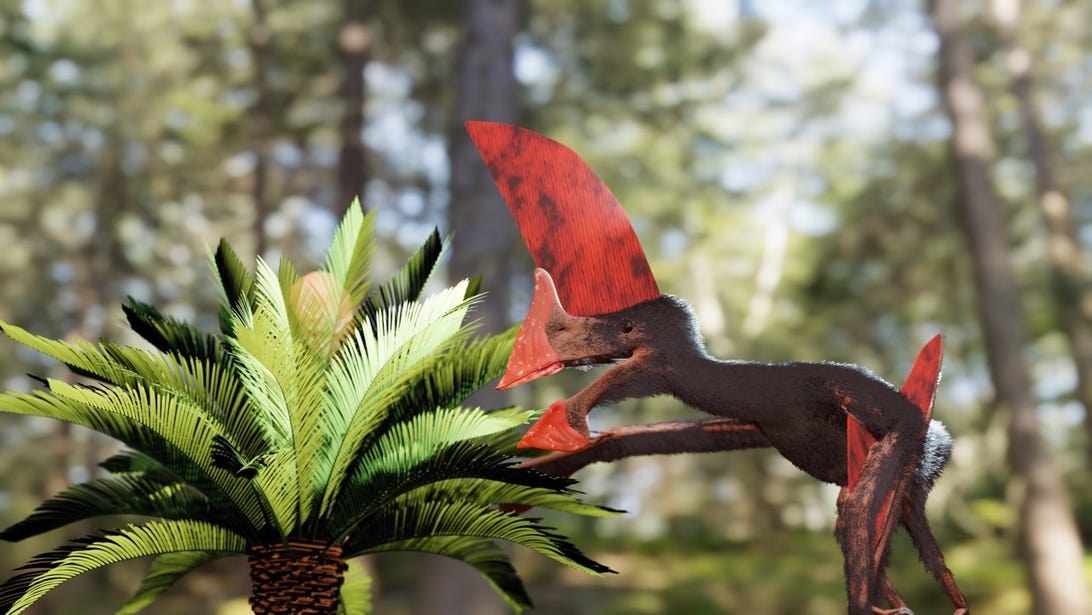Police raid unearths prehistoric flying reptile in remarkable condition

Researcher Victor Beccari worked up this adorable 3D model of the tapejarid. “Although we don’t know what color the crest could be, a safe bet would be something in between red and brown,” Beccari says.
Victor Beccari
A fossil discovered during a police raid in Brazil has turned out to be one of the best-preserved flying reptiles found yet, researchers say.
The remains belong to a tapejarid, a toothless pterosaur from the early Cretaceous period known for its huge cranial crest composed partly of bone and partly of soft tissue. Skulls and partial skeletons of Brazilian tapejarids have turned up before, but this fossil was found with more than 90% of its skeleton intact, along with some soft tissue in place around the bones.
“This fossil is special because it is the most complete pterosaur from Brazil and it brings new information about the anatomy and ecology of this animal,” says Victor Beccari, co-author of a study on the find published Wednesday in the open-access journal PLOS One.
Brazilian federal police found the tapejarid fossil while investigating an illegal fossil trade operation in 2013. They recovered 3,000 specimens kept in storage units in the states of São Paulo, Minas Gerais and Rio de Janeiro and transferred them to the Geosciences Institute of the University of São Paulo for study. Since 1942, Brazilian law has categorized fossils as state property, as they’re considered part of the country’s geological heritage and forbidden from being sold commercially.
This tapejarid belongs to the species Tupandactylus navigansm and Beccari began studying it in 2016 while a biological sciences undergrad at the University of São Paulo. There, he used CT scanning to assess the bones still covered by sediment.
Pteosaurs populated Earth as recently as 66 million years ago, before an asteroid death blast ended the dinosaurs’ reign, and as early as 228 million years ago.
The reptile described in the study originally comes from the Crato Formation in the Araripe basin, a fossil-rich area in northeastern Brazil that dates back to a time in the Cretaceous period around 115 million years ago. The remains were found preserved in six perfectly complementary yellowish limestone slabs that fit together by rectilinear cuts to present a nearly complete picture of the creature. It had a wingspan of more than 8 feet (2.5 meters) and stood 3.2 feet (1 meter) tall, with its head crest accounting for an astounding 40% of its height.
That sizable head crest and relatively long neck, the researchers conclude, may have limited the creature to short-distance flights and terrestrial foraging. They hope future…
Read More: Police raid unearths prehistoric flying reptile in remarkable condition
